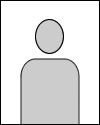Pain associated with prostaglandin E(1)-containing intracavernosal injection medication is associated with poor erectile function recovery after radical prostatectomy Journal Article
| Authors: | West, M.; Cordon, B. H.; Ortega, Y.; Narus, J.; Mulhall, J. P. |
| Article Title: | Pain associated with prostaglandin E(1)-containing intracavernosal injection medication is associated with poor erectile function recovery after radical prostatectomy |
| Abstract: | Background: Intracavernosal injection therapy is often used as second-line therapy for erectile dysfunction associated with radical prostatectomy when therapy with phosphodiesterase-5 inhibitors has failed, but prostaglandin E1-containing vasoactive agents are associated with penile pain in some men. Objectives: To define the incidence of pain with prostaglandin E1-containing intracavernosal injection mixtures for erectile dysfunction associated with radical prostatectomy when therapy with phosphodiesterase-5 inhibitors has failed, and whether pain was a predictor of erectile function recovery. Materials and methods: Men who underwent radical prostatectomy and were commenced on intracavernosal injection within 12 months of radical prostatectomy were included. A pain visual analog scale (0–10) was used to assess the degree of pain. Erectile function recovery was defined as the International Index of Erectile Function domain score ≥24 using phosphodiesterase-5 inhibitors at 24 months. Results: The study included 566 patients, mean age was 58 ± 14 (42–74) years. Duration post-radical prostatectomy at intracavernosal injection training was 3.5 ± 3.5 m. Nerve sparing status: bilateral 76%, unilateral 13%, and non-nerve sparing 11%. Incidence of pain with intracavernosal injection per nerve sparing status: bilateral 10% of patients, unilateral 32%, non-nerve sparing 92% (p < 0.001). Median visual analog scale in those experiencing pain: bilateral 4 (interquartile range 3, 5), unilateral 5.5 (interquartile range 3, 6), non-nerve sparing 7 (interquartile range 3, 9) (p < 0.001). Phosphodiesterase-5 inhibitors success at 24 months (no pain vs. pain): bilateral 70% vs. 40% (p < 0.001), unilateral 50% vs. 28% (p < 0.001), non-nerve sparing 10% vs. 0% (p < 0.001). On multivariate analysis, predictors of failure to respond to phosphodiesterase-5 inhibitors at 24 months post-radical prostatectomy included baseline erectile function, increasing age, incomplete nerve-sparing surgery, and presence of pain. Discussion: The presence of penile pain with intracavernosal injection is associated with poorer erectile function recovery post-radical prostatectomy. Conclusions: Incidence of pain is high in men with non-nerve sparing radical prostatectomy; older patient age, poorer nerve sparing, poor baseline erectile function, and the presence of penile pain with prostaglandin E1-containing intracavernosal injection medication, were predictive of poor erectile function recovery using phosphodiesterase-5 inhibitors at 24 months. © 2024 American Society of Andrology and European Academy of Andrology. |
| Keywords: | pain; radical prostatectomy; intracavernosal injection; pge<sub>1</sub> |
| Journal Title: | Andrology |
| Volume: | 13 |
| Issue: | 6 |
| ISSN: | 2047-2919 |
| Publisher: | Wiley Blackwell |
| Publication status: | Published |
| Date Published: | 2025-09-01 |
| Online Publication Date: | 2024-10-26 |
| Start Page: | 1484 |
| End Page: | 1489 |
| Language: | English |
| DOI: | 10.1111/andr.13784 |
| PROVIDER: | scopus |
| PMCID: | PMC12032061 |
| PUBMED: | 39462154 |
| DOI/URL: | |
| Notes: | Article -- MSK Cancer Center Support Grant (P30 CA008748) acknowledged in PubMed and PDF -- MSK corresponding author is Michael West -- Source: Scopus |
Altmetric
Citation Impact
BMJ Impact Analytics
Related MSK Work





